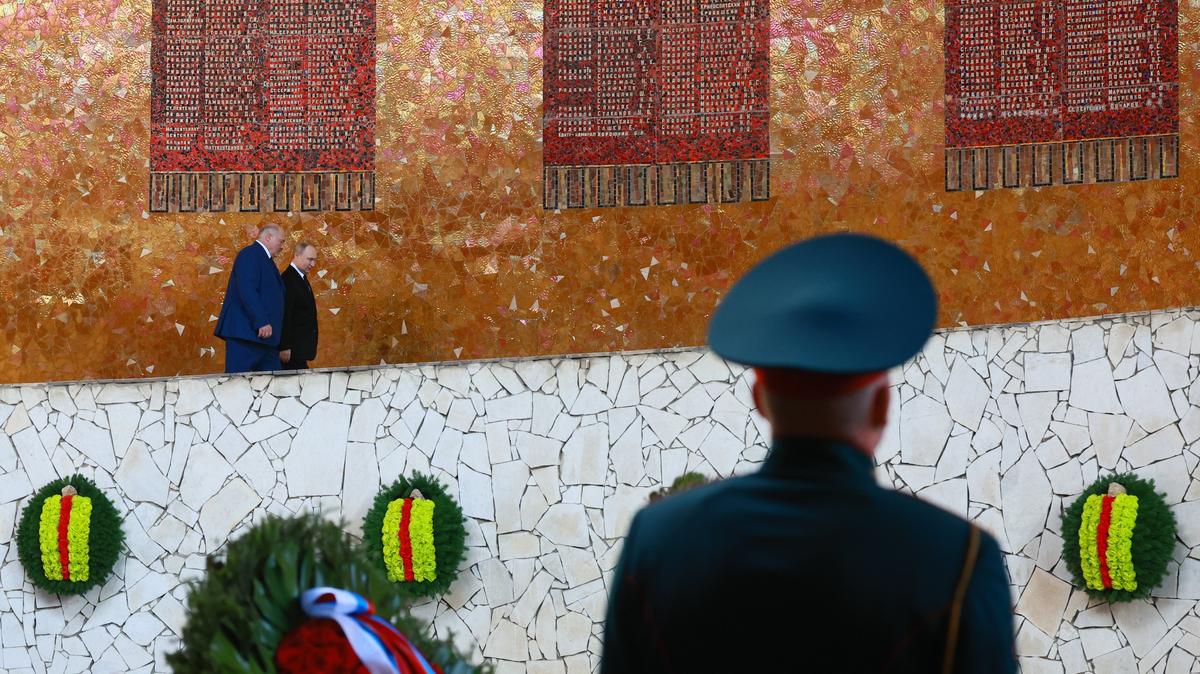Vladimir Putin has announced a three-day ceasefire in Ukraine to commence on 8 May, coinciding with the 80th anniversary of the Soviet Union’s victory in World War II. The Kremlin says “all hostilities will be suspended” during this period and has made it clear it expects Ukraine to follow suit. Ukraine responded by calling for an immediate month-long ceasefire and questioned Russia’s commitment to lasting peace. In a post on social media, Ukraine’s Foreign Minister Andriy Sybiha wrote: “If Russia truly wants peace, it must cease fire immediately. Why wait…?”

Natasha Lindstaedt
Professor in the Department of Government at the University of Essex
The ceasefire announcement followed two important developments. On 18 April, US Secretary of State Marco Rubio claimed that President Donald Trump was growing impatient and was likely to abandon peace efforts within days if there was no progress. Trump then made a rare rebuke of Putin on social media, writing “Vladimir, STOP!” after a Russian air attack on Kyiv on 24 April killed 12 people and injured more than 80 others.
A temporary ceasefire allows Putin to do just enough to keep Trump thinking he is committed to a peace deal, hoping this will lead to eventual sanctions relief. But it also has clear benefits for Russia on the battlefield. Many aggressors use ceasefires to regroup, rearm and improve their positioning. Analysts have warned that Russia will use the pause to reorganise in order to pursue larger territorial ambitions, particularly in southern and eastern Ukraine.
Putin has enticed Trump with potential investment opportunities in Russia, such as a Trump Tower project in Russia, and has supported his administration’s desire to take over Greenland.
According to Ukraine, the broken “Easter truce” helped Russian forces in the Lyman sector of the Donetsk region regroup and launch a large-scale infantry assault shortly after its end. Ukrainian President Volodymyr Zelensky says the Easter ceasefire was violated by Russia around 3,000 times.
While Trump appears frustrated by these recent developments, he has remained committed to maintaining a solid relationship with Putin. And in spite of the fact that only 2% of Americans are sympathetic to Russia, Trump has done little to hide his admiration for the Russian leader.
Bloomberg news examined more than 300 of Trump’s public comments and over 3,000 social media posts since August 2024 and found that Trump has been echoing Russian talking points. The latest evidence of this occurred just days ago. When asked by a journalist on 25 April about what concessions Putin has made in the negotiation process, Trump claimed his Russian counterpart was making a “pretty big concession” by not taking over all of Ukraine.
And while most western leaders condemned the Russian invasion of Ukraine in 2022, Trump referred to it initially as “genius” and “savvy”. Trump not only respects Putin but sees their relationship as mutually beneficial. Putin has enticed Trump with potential investment opportunities in Russia, such as a Trump Tower project in Russia, and has supported his administration’s desire to take over Greenland.
Zelensky has made it clear that Crimea belongs to Ukraine, and that Russian annexation violates Ukraine’s current constitution.
Though Putin occasionally flatters Trump, this is mostly to manipulate him. It was easy to see through Putin’s intentions with his commissioning of a laudatory portrait of Trump in the aftermath of his assassination attempt, standing triumphantly with the Statue of Liberty and American flag in the background. But, apparently, Trump was touched by it.
This flattery seems to be working. Trump has recently announced that he supported Putin’s claims on Crimea, which Russia seized in 2014, representing a huge departure from decades of US foreign policy. By doing so, Trump is reneging on the 1994 Budapest Memorandum, where the US committed to support Ukraine’s sovereignty. This constitutes a breach of international law and will also make peace in Ukraine harder to achieve.

Ukrainian rescue workers at the site of a drone strike in Kharkiv, Ukraine, 29 April 2025. Photo: EPA-EFE/SERGEY KOZLOV
The recognition of Russian sovereignty over Crimea is considered a red line for Ukraine and would be politically unpopular. Zelensky has made it clear that Crimea belongs to Ukraine, and that Russian annexation violates Ukraine’s current constitution. The constitution cannot be changed when the country is at war and under martial law.
In spite of the unfavourable terms of any looming peace agreement, Zelensky has little choice at this point but to support a ceasefire. Nearly 90% of Ukrainians polled have faced stress due to the war and another poll, published in March, showed that 77% of Ukrainians back a ceasefire.
The other issue is that Zelensky can no longer count on the US. And research from 2023 shows that for parties that have lost international support, moving towards a ceasefire is much more likely. With the US making clear that long-term support for Ukraine is not guaranteed, and Trump not approving a single military aid package since taking office, Zelensky has few options but to support a ceasefire agreement.
Russia will continue to manipulate the peace process and block future security guarantees for Ukraine.
Ceasefires are fairly common occurrences in conflict — over 230 ceasefires have taken place since 1990. But they are frequently broken. Russia in particular has not been the most trustworthy partner in peace. According to Zelensky, Putin has broken 25 peace agreements over the past decade. This doesn’t leave one with much confidence that the latest ceasefire is a genuine move towards peace for Putin, or that the ceasefire will lead to anything more substantial.
With Trump impatient to get a deal done rather than address the root cause of the conflict —Russia’s imperial ambitions — Russia will continue to manipulate the peace process and block future security guarantees for Ukraine. Putin is an expert at committing to agreements that he will renege on. By doing so, he can exact more concessions in the process, all the while blaming Ukraine for the breakdown in peace.
This article was first published by The Conversation. Views expressed in opinion pieces do not necessarily reflect the position of Novaya Gazeta Europe.
Join us in rebuilding Novaya Gazeta Europe
The Russian government has banned independent media. We were forced to leave our country in order to keep doing our job, telling our readers about what is going on Russia, Ukraine and Europe.
We will continue fighting against warfare and dictatorship. We believe that freedom of speech is the most efficient antidote against tyranny. Support us financially to help us fight for peace and freedom.
By clicking the Support button, you agree to the processing of your personal data.
To cancel a regular donation, please write to [email protected]

